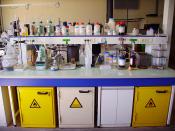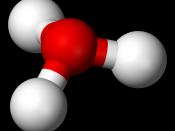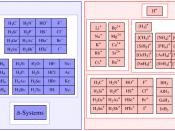What is an acid and a base?
The first person that tried to define acids and bases was Arrhenius. His theory proposed that an acid is any substance that produces a proton H+, when dissolved in water and the resulting solution is an electrolyte. A base is any substance that produces hydroxide ions, when dissolved in water; they are also called alkali. This theory was able to explain the way acids and bases react; the only substance that the theory was not able to explain was NH3. So the definition of an acid and a base was redefined, and the Brønsted-Lowry Theory was created. This theory stated that an acid will donate a proton H+ and a base will accept one; it also claimed that an acid or a base will never be a base or an acid until they are dissolved in the water.
Although no theory has been accepted as a law to explain the way acids and bases react, the Brønsted-Lowry theory is the most accepted one.
Properties of acids and bases.
Some of the properties of the acids and bases are:
-Acids taste sour and bases taste bitter.
-Acids turn blue litmus to red; bases turn red litmus to blue.
-In a neutralization reaction, acids neutralize bases; and bases neutralize acids.
-Acids release a hydrogen ion into aqueous solution and bases release a hydroxide ion.
-The hydrogen ion of the acid and the hydroxide ion of the base unite to form water.
-An acid plus a base makes water plus a salt.
-When acids react with carbonates, carbon dioxide is formed; when a base reacts with a carbonate no reaction takes place.
-When acids react with ammonium chloride, no reaction takes place; when a base reacts with ammonium chloride, ammonia is produced.
What is a Chemical...


